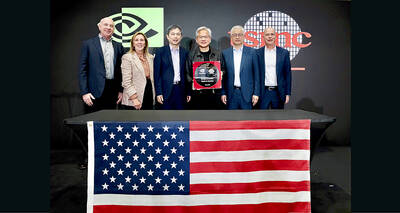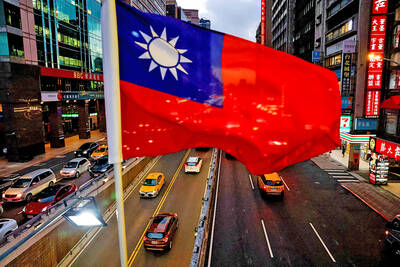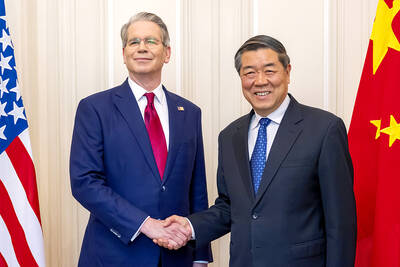Ukrainian Prime Minister Mykola Azarov said on Sunday a merger between Russian energy giant Gazprom and Ukraine’s state gas firm Naftogaz was not in the pipeline.
Gazprom last month proposed creating a 50-50 joint venture with Naftogaz, calling it a possible first step toward a merger of the two companies.
The proposal came after Russian Prime Minister Vladimir Putin floated the idea of the merger, angering critics in Ukraine who said the move would amount to a takeover of Naftogaz by the much larger Gazprom.
Interfax quoted Azarov as telling Ukrainian television on Sunday there would be no such deal.
“But we will be searching for some sort of organization” that would allow the two groups to cooperate, he added.
Gazprom chief executive Alexei Miller suggested the joint venture idea after a May 28 meeting in Moscow with Ukrainian Energy and Fuel Minister Yury Boiko. The two men “discussed questions involving the proposal to merge Gazprom and Naftogaz. The sides agreed this process should come in stages,” a statement said at the time.
“The first step could be the creation of a joint venture on an equal, 50-50 basis between the two companies. Now it is necessary to determine the list of assets which could be given to the joint venture from both sides,” Miller was quoted as saying.
Ukraine’s pro-Western opposition has expressed fear that new, Kremlin-friendly Ukrainian President Viktor Yanukovych will hand over the country’s prize assets to its giant neighbor and Soviet-era master Russia as he seeks to pull Ukraine out of a deep recession.

Jensen Huang (黃仁勳), founder and CEO of US-based artificial intelligence chip designer Nvidia Corp and Taiwan Semiconductor Manufacturing Co (TSMC, 台積電) on Friday celebrated the first Nvidia Blackwell wafer produced on US soil. Huang visited TSMC’s advanced wafer fab in the US state of Arizona and joined the Taiwanese chipmaker’s executives to witness the efforts to “build the infrastructure that powers the world’s AI factories, right here in America,” Nvidia said in a statement. At the event, Huang joined Y.L. Wang (王英郎), vice president of operations at TSMC, in signing their names on the Blackwell wafer to

AI BOOST: Although Taiwan’s reliance on Chinese rare earth elements is limited, it could face indirect impacts from supply issues and price volatility, an economist said DBS Bank Ltd (星展銀行) has sharply raised its forecast for Taiwan’s economic growth this year to 5.6 percent, citing stronger-than-expected exports and investment linked to artificial intelligence (AI), as it said that the current momentum could peak soon. The acceleration of the global AI race has fueled a surge in Taiwan’s AI-related capital spending and exports of information and communications technology (ICT) products, which have been key drivers of growth this year. “We have revised our GDP forecast for Taiwan upward to 5.6 percent from 4 percent, an upgrade that mainly reflects stronger-than-expected AI-related exports and investment in the third

RARE EARTHS: The call between the US Treasury Secretary and his Chinese counterpart came as Washington sought to rally G7 partners in response to China’s export controls China and the US on Saturday agreed to conduct another round of trade negotiations in the coming week, as the world’s two biggest economies seek to avoid another damaging tit-for-tat tariff battle. Beijing last week announced sweeping controls on the critical rare earths industry, prompting US President Donald Trump to threaten 100 percent tariffs on imports from China in retaliation. Trump had also threatened to cancel his expected meeting with Chinese President Xi Jinping (習近平) in South Korea later this month on the sidelines of the APEC summit. In the latest indication of efforts to resolve their dispute, Chinese state media reported that

CHINESE EXPORT CURBS: A dispute between China and the Netherlands could halt chip supply, affecting vehicle production, US and European auto associations said Groups representing major automakers late on Thursday warned that a chip disruption stemming from a dispute between China and the Dutch government could quickly affect US auto production. Automakers and their suppliers received notice from chipmaker Nexperia (安世半導體) last week that it could no longer guarantee delivery of its chips, the European Automobile Manufacturers Association said, adding that manufacturing could be significantly disrupted. In the US, the Alliance for Automotive Innovation, which represents General Motors, Toyota, Ford, Volkswagen, Hyundai and nearly all other major automakers, urged a quick resolution. “If the shipment of automotive chips doesn’t resume — quickly — it’s going to